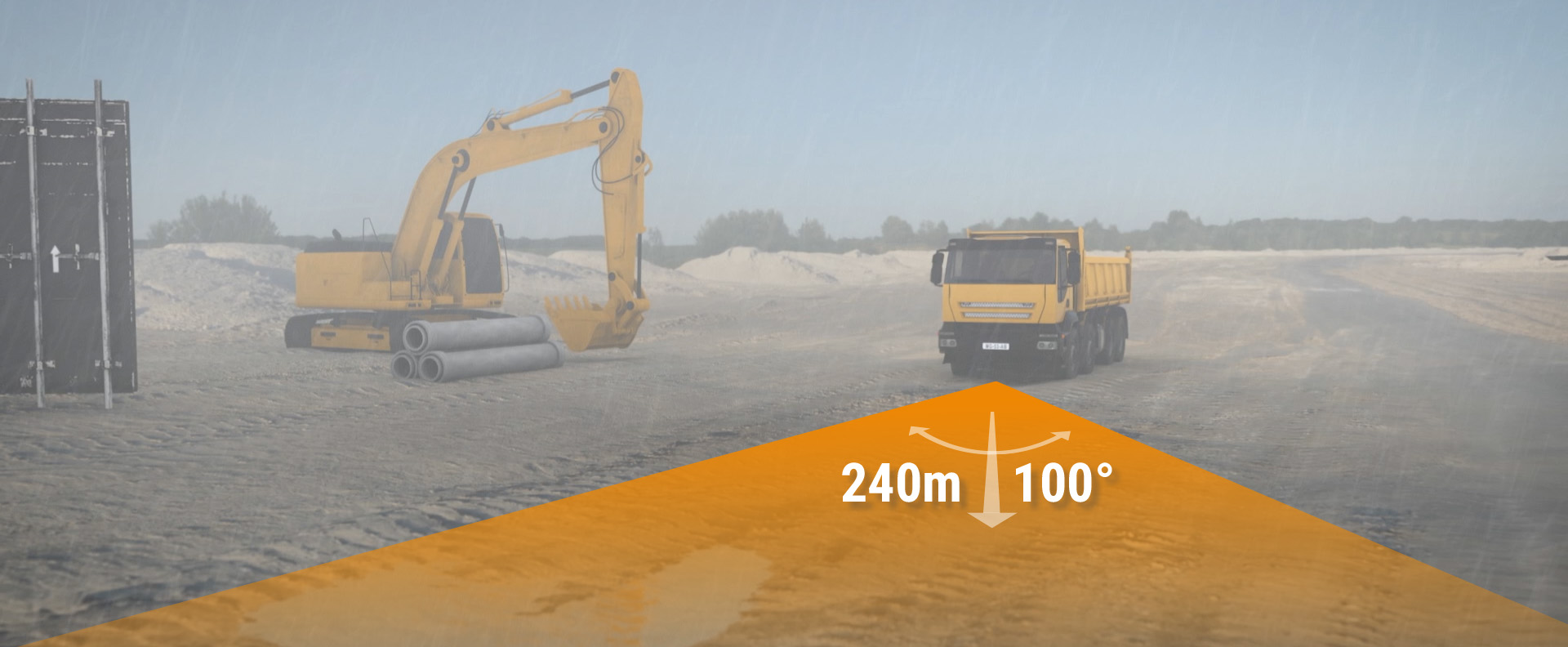Software defined radar
A new extra long-range radar for reliable collision avoidance

This article was originally published in ADAS & Autonomous Vehicle International Magazine (September 2022). You can preview the original version here (click).
For autonomous driving, reliable and highly precise real-time data about what is happening in front of or behind the vehicle is essential. This applies to L2 advanced driver assistance systems and becomes even more important with a higher level (L2+) of automation. High safety standards apply, especially when autonomous vehicles operate around people.
The new generation smartmicro radar sensor – DRVEGRD 171 – provides rich object-specific data and Pixel-High Definition (PxHD) with 4-dimensional (4D) resolution. Such data is required for warning systems, for advanced driver assistance systems (ADAS), and for autonomous vehicles. Only with such precise and reliable data, the overall system can fulfill high safety regulations. For over 25 years, smartmicro has been designing, developing, and manufacturing high-performance sensors for making the future of the automotive industry safer. The brand-new smartmicro automotive sensor is designed to increase the safety of partly or fully autonomous driving vehicles - like industrial robots, autonomous shuttles, or heavy construction vehicles.
The new front sensor DRVEGRD 171 is a software-defined radar with 4D high resolution for collision avoidance in different use cases. While the short-range mode enables object detection already at 0.2m, the extra-long-range mode covers up to 240m, all of them having a 100° field of view. There is also a 100m medium-range mode. With this flexibility and the far-distance coverage, DRVEGRD 171 can be used for different autonomous or commercial applications, even those where greater braking distances are required. Selectable center frequencies allow the interference-free parallel operation of multiple sensors, which are also ready for time-synchronized operation.
Targeting functional safety ASIL-B specifications, DRVEGRD 171 enables the integration into scalable and reliable systems and fulfills the challenges of the autonomous vehicle market. The sensor has an azimuth accuracy of typically <=0.25° as well as true angular separation of two targets with the same radial distance and the same radial speed with a difference in azimuth angle of as little as 2°, coming close to an imaging radar. The sensor is using its antenna setup in DDMA MIMO mode, where all transmitting antennas are sending simultaneously with variably shifted phases. Together with the increased antenna array size of 48 channels, implemented as 3D waveguide module, this leads to a better sensitivity for longer range, as well as much higher accuracy compared to previous sensor models. In our user-selectable short-range mode, which can be used in challenging scenarios like intersections, the cycle time can be as short as 32ms.
In parallel to DRVEGRD 171, smartmicro releases a variant with a slightly thinner form factor - the DRVEGRD 152 - using a conventional patch-type antenna system. Both DRVEGRD 171 and DRVEGRD 152 use the latest NXP S32R294 16nm FinFET processors which have much higher processing power with regards to the predecessor model, leading to an increase in the number of targets that are detected and reported (256+ points in point cloud, ~10k+ points per second). To keep up with this higher density point cloud, the new sensors are using CAN FD and Automotive Ethernet. Thanks to the enhanced positioning of the sensor connector going out towards the side, the integration into vehicles is simplified. DRVEGRD family also features self-diagnose and interference detection and suppression.
The DRVEGRD line was designed and developed according to ISO26262 as Safety Element out of Context (SEooC). They contain the latest 4D Pixel-High Definition (PxHD) technology and deliver 4-dimensional Object Tracking, including VRU tracking. Thanks to the almost unbreakable design and the high performance, which is almost unaffected by harsh weather conditions, smartmicro sensors are an excellent choice for your safety-relevant autonomous driving application.

